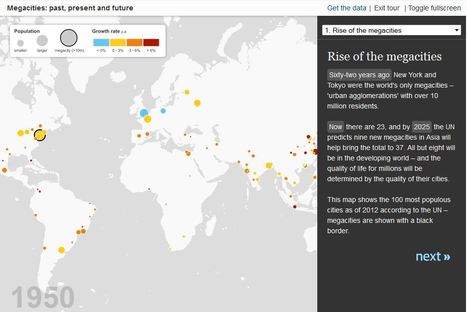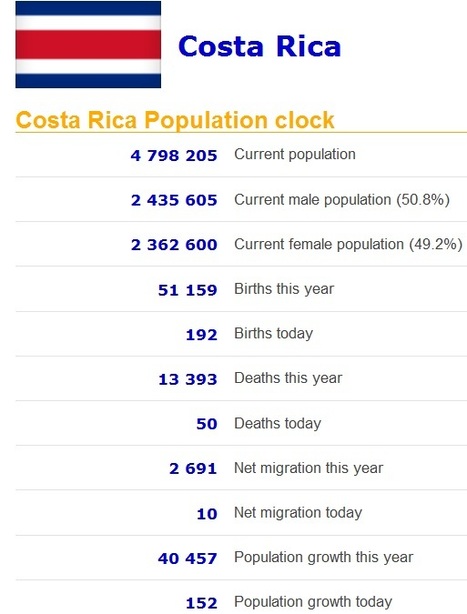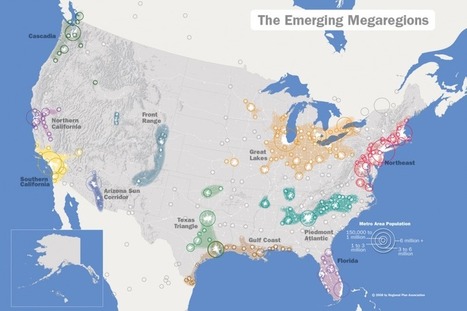By 2025, the developing world will be home to 29 megacities.
Through this interactive mapping feature with rich call-out boxes, the reader can explore the latest UN estimates and forecasts on the growth of megacities (urban areas with over 10 million residents). These 'cities on steroids' have been growing tremendously since the 1950s and present a unique set of geographic challenges and opportunities for their residents.
Tags: urban, megacities.



 Your new post is loading...
Your new post is loading...
















Very cool!
World cities and megacities - Presently , the mega cities of the world have to have a population of at least 10,000. Many cities are very near the minimum to be considered a mega city, but are not quite there. By 2025, the developing world, as we understand it now, is estimated to be home to 29 megacities.